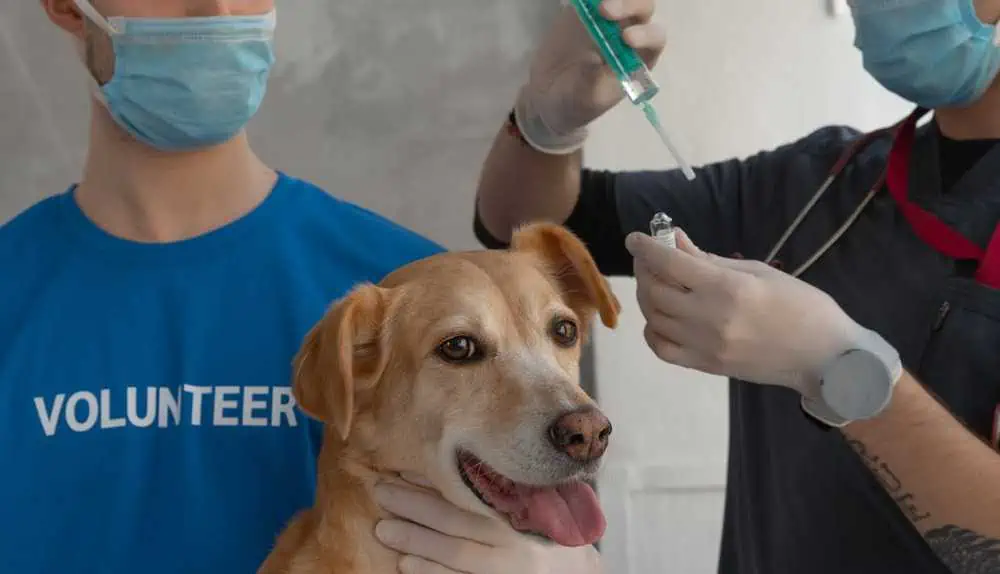How to sell payment processing to veterinarians? It is an important question many payment processors ask and one that isn’t very difficult to address. Several strategies can be used when trying to work out how to sell payment processing to veterinarians. By focusing on the benefits of payment processing for vets, offering demos and trials, providing top-notch customer support for the veterinarian payment processing service, offering competitive pricing, and showcasing success stories, how to sell payment processing to veterinarians becomes a no-brainer.
In this article, we look at how to sell payment processing to veterinarians by focusing on a few vital areas for showcasing the benefits of veterinarian payment processing. Credit card processing agents can emphasize specific benefits of payment processing for vets, their level of service commitment, the added tertiary incentives that come along with the veterinarian payment processing, and explain that they have the best price available for payment processing for vets. How to sell payment processing to veterinarians isn’t rocket science. It requires insightful and transparent knowledge sharing.
Emphasize the benefits of payment processing for vets

How to sell payment processing to veterinarians has a straightforward solution. One only needs to emphasize the various benefits of payment processing for vets. The first benefit to highlight when deciding how to sell payment processing to veterinarians is convenience. Veterinarian payment processing allows them to accept various payment methods, including credit and debit cards, electronic checks, and mobile payments. This makes it easier for customers to pay for services and reduces the need for customers to carry cash or write checks.
Another great benefit of payment processing for vets is the potential for increased sales. By accepting various payment methods, veterinarians can increase sales by making it easier for customers to pay. This can be especially useful for customers who do not have cash or checks on hand or are more comfortable using contactless payment methods.
When looking to understand how to sell payment processing to veterinarians, always point to the reduction in costs. Veterinarian payment processing can help them reduce costs associated with handling cash and checks, such as the cost of depositing checks and the risk of theft or loss.
Another great benefit of veterinarian payment processing is improved record keeping. Payment processing for vets can streamline their billing and record-keeping processes by automatically tracking payments and generating reports. This can save time and reduce the risk of errors.
To sell payment processing for vets, it may be helpful to highlight these benefits and explain how veterinarian payment processing can help them improve their business operations and provide better service to their customers.
Showcase market dynamics and behavioral shifts
Over the past few years, many consumers have started to conduct business online and pay via non-cash methods. Even for in-person transactions, the preferred method of payment is non-cash. Today, over 80% of transactions are processed via cashless [MF1] means. Two-thirds of respondents of the Gen-Z demographic cohort that responded to a Statista poll prefer shopping over the internet for an in-store visit. Similar trends were observed among the Gen-X cohort, with 56% choosing online to in-store.
These are not trends that veterinarians can ignore. And it is these trends that need to be leveraged to understand how to sell payment processing to veterinarians. No veterinarian is willing to turn away customers because they cannot transact how their customers prefer to do business.
Be Transparent
When considering how to sell payment processing to veterinarians, specific key factors regarding transparency stand out for veterinarian payment processing. Firstly, ensuring that you offer a transparent fee schedule is essential, as hidden fees can cause issues for businesses later. Simply be forthcoming and disclose all the costs associated with payment processing for vets.
Additionally, you’ll want to ensure the company is PCI-compliant and can protect customer data. It’s also important to consider the types of terminals and point-of-sale systems that the processor offers and whether they will meet the needs of a veterinarian business. Finally, you’ll want to ensure that you are fully transparent about the various contract conditions regarding termination policies and that early termination fees are clearly outlined if any. Considering these factors, you can choose the best payment processor for your business.
The importance of security in your payment infrastructure
More and more, contactless and non-cash methods of payment are becoming the norm. As they grow in popularity, the risk of fraudulent activity increases. There are several steps payment processors can advise merchants to take to not only prevent fraud but to inspire confidence in the security of their payment platform.
The first option is to use a process called “card on file,” where the customer’s payment information is saved on the merchant’s database and processed through an encrypted mechanism called tokenization. This can save time and reduce the risk of payment errors for all future visits. Furthermore, veterinarians can also build trust with their customers by showcasing security certificates on their website, such as encryption with SSL and trust badges like “PayPal Verified” or “Secured by Verisign.”
According to the American Express Digital Payments Trendex Report[MF2] , 90% of consumers believe that businesses already have sufficient measures to secure their financial information. Many feel that those security protocols may have gone overboard, and nearly 40% of respondents think the measures now cause confusion and are cumbersome. However, merchant service providers can guide veterinarians on which steps to take to reassure their customers that their transactions are secure and convenient.
Offer competitive pricing when selling veterinarian payment processing
One of the best ways how to sell payment processing to veterinarians is to offer competitive pricing. Being competitive with pricing may not require a significant undercutting of prices. That level of expertise that can impart knowledge to veterinarians can help you choose your payment processing service over the competition.
The language surrounding the fees for payment processing for vets can be very confusing. Figuring out how to sell payment processing to veterinarians may be as simple as explaining the difference between interchange plus vs. tiered pricing. Interchange fees, or the fees veterinarians and other merchants pay for payment processing services, are based on various variables, such as the type of card, transaction type, and nature of the purchase.
Interchange pass-through pricing, also known as interchange-plus pricing, involves passing on the payment network’s published cost plus a markup to the merchant.
Tiered pricing involves grouping interchange fees into categories or tiers, with each level having a specific rate that applies to all cards in that tier. However, tiered pricing can be more expensive for merchants as they may be charged higher rates than the published interchange fees, and it can also be less transparent as merchants may not know which tier their transactions fall into.
Veterinarian payment processing includes top-notch Customer Support
One of the best ways how to sell payment processing to veterinarians is to provide the best customer support. By offering reliable customer support to help with any questions or issues they may have with veterinarian payment processing, merchant service providers are considered to be trusted advisors rather than simply vendors.
Payment processing for vets will be a game changer for the customer experience they can offer. The shift towards prioritizing the customer experience is the most significant trend in the payments industry. Companies that prioritize their customers’ needs and satisfaction rather than relying on outdated practices, such as long wait times and confusing terms and conditions, have thrived.
This trend has been fueled partly by the power of social media and online reviews, but many payment processing companies have yet to adopt a customer-centric approach fully.
As a result, there may be a need to showcase success stories, customers who can vouch for the top-notch service offered, and share success stories and testimonials from other veterinarians who have implemented payment processing in their practices.
This can help to build credibility and showcase the benefits of payment processing to potential clients for payment processing for vets. Testimonials and references are one of the best ways how to sell payment processing to veterinarians.
Furthermore, make payment processing simple and hassle-free to improve customer experience and ease your team’s workload. This can be achieved by offering various payment options, such as credit card processing and digital payments, and providing itemized receipts. This will make the payment process more efficient for your customers, customers who are anxious and overwhelmed with a high bill, and a stressed pet, and make it more enjoyable for your team members who handle payments frequently.
Tertiary value-add services along with veterinarian payment processing
Consider offering incentives, such as discounts or special offers, as well as emphasizing the additional tertiary services available to encourage veterinarians to sign up as another option on how to sell payment processing to veterinarians. These other services can include any of the following:
Set up recurring payments – Recurring payment options can make veterinarian payment processing much more seamless for their business and their pet owner clients who need to refill prescriptions or have purchased wellness plans. By automating the process, recurring billing eliminates the need for manual payments and simplifies the process for both pet owners and staff. Additionally, customers can pay for expensive services in installments, improving the overall experience, especially when.
Client payments data on file – For repeat customers, storing card info securely on file allows vet clinics to simplify the checkout process. With this, customers don’t need to enter payment info every time they visit. They can simply charge the card with a single click. Saving cards on file allows them to make payments over the phone and send a remote signature for verification.
Data Security and PCI Compliance – To ensure the security and protection of their customers’ payment information, it is essential to implement safeguards against data breaches and fraud when considering payment processing for vets.
Reporting and Analytics – Veterinary clinics often use reporting and analytics dashboards to track various metrics related to their financial performance. Offering an intuitively designed dashboard to track all payments collected that are easily reconcilable can also easily integrate with accounting software as part of veterinarian payment processing can easily win vet clinic customers.
Dashboards can also help vet clinics identify areas where they may be underperforming or where there are opportunities for growth and expansion. Overall, reporting and analytics dashboards are essential tools for vet clinics to monitor and improve their business operations and to make data-driven decisions that drive success and growth.
Conclusion
Understanding [MF2] how to sell payment processing to veterinarians is quite simple. Payment processing for vets can be achieved through a combination of strategies, including emphasizing the benefits of payment processing for vets, offering demos and trials, providing excellent customer support, offering competitive pricing, and showcasing success stories.
It is essential to focus on the convenience of payment processing for veterinarians, the potential for increased sales, the reduction in costs, improved record keeping, and the market dynamics and behavioral shifts towards cashless transactions. Additionally, emphasizing transparency and honesty about fees and contracts is crucial in building trust when offering payment processing for vets.
By highlighting these points and demonstrating a commitment to providing top-notch service, payment processors can effectively sell their services to veterinarians.
[MF1]https://www.frbsf.org/cash/publications/fed-notes/2019/june/2019-findings-from-the-diary-of-consumer-payment-choice/#:~:text=Individuals%20aged%2018%20to%2025,by%20two%20payments%20per%20month.
Figure 7
[MF2]https://network.americanexpress.com/globalnetwork/dam/jcr:933b52e4-7b41-40e2-995c-3691cc1efd90/Amex%20Digital%20Trendex%202021%20Digital%20Payments%20Edition.pdf

